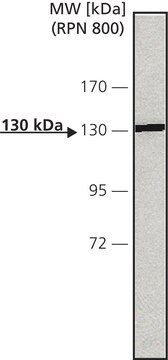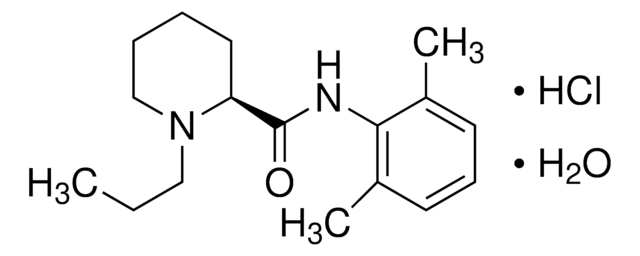Wichtige Dokumente
C1119
Caroverine hydrochloride
≥98% (HPLC), solid
Synonym(e):
1-[2-(Diethylamino)ethyl]-3-[(4-methoxyphenyl)methyl]-2(1H)-quinoxalinone monohydrochloride
About This Item
Empfohlene Produkte
Assay
≥98% (HPLC)
Form
solid
Löslichkeit
DMSO: >10 mg/mL
H2O: insoluble
Lagertemp.
2-8°C
SMILES String
Cl.CCN(CC)CCN1C(=O)C(Cc2ccc(OC)cc2)=Nc3ccccc13
InChI
1S/C22H27N3O2.ClH/c1-4-24(5-2)14-15-25-21-9-7-6-8-19(21)23-20(22(25)26)16-17-10-12-18(27-3)13-11-17;/h6-13H,4-5,14-16H2,1-3H3;1H
InChIKey
JRNWTJUIMRLKBV-UHFFFAOYSA-N
Biochem./physiol. Wirkung
Leistungsmerkmale und Vorteile
Signalwort
Warning
H-Sätze
Gefahreneinstufungen
Acute Tox. 4 Oral
Lagerklassenschlüssel
13 - Non Combustible Solids
WGK
WGK 3
Flammpunkt (°F)
Not applicable
Flammpunkt (°C)
Not applicable
Persönliche Schutzausrüstung
dust mask type N95 (US), Eyeshields, Faceshields, Gloves
Hier finden Sie alle aktuellen Versionen:
Analysenzertifikate (COA)
Die passende Version wird nicht angezeigt?
Wenn Sie eine bestimmte Version benötigen, können Sie anhand der Lot- oder Chargennummer nach einem spezifischen Zertifikat suchen.
Besitzen Sie dieses Produkt bereits?
In der Dokumentenbibliothek finden Sie die Dokumentation zu den Produkten, die Sie kürzlich erworben haben.
Unser Team von Wissenschaftlern verfügt über Erfahrung in allen Forschungsbereichen einschließlich Life Science, Materialwissenschaften, chemischer Synthese, Chromatographie, Analytik und vielen mehr..
Setzen Sie sich mit dem technischen Dienst in Verbindung.









